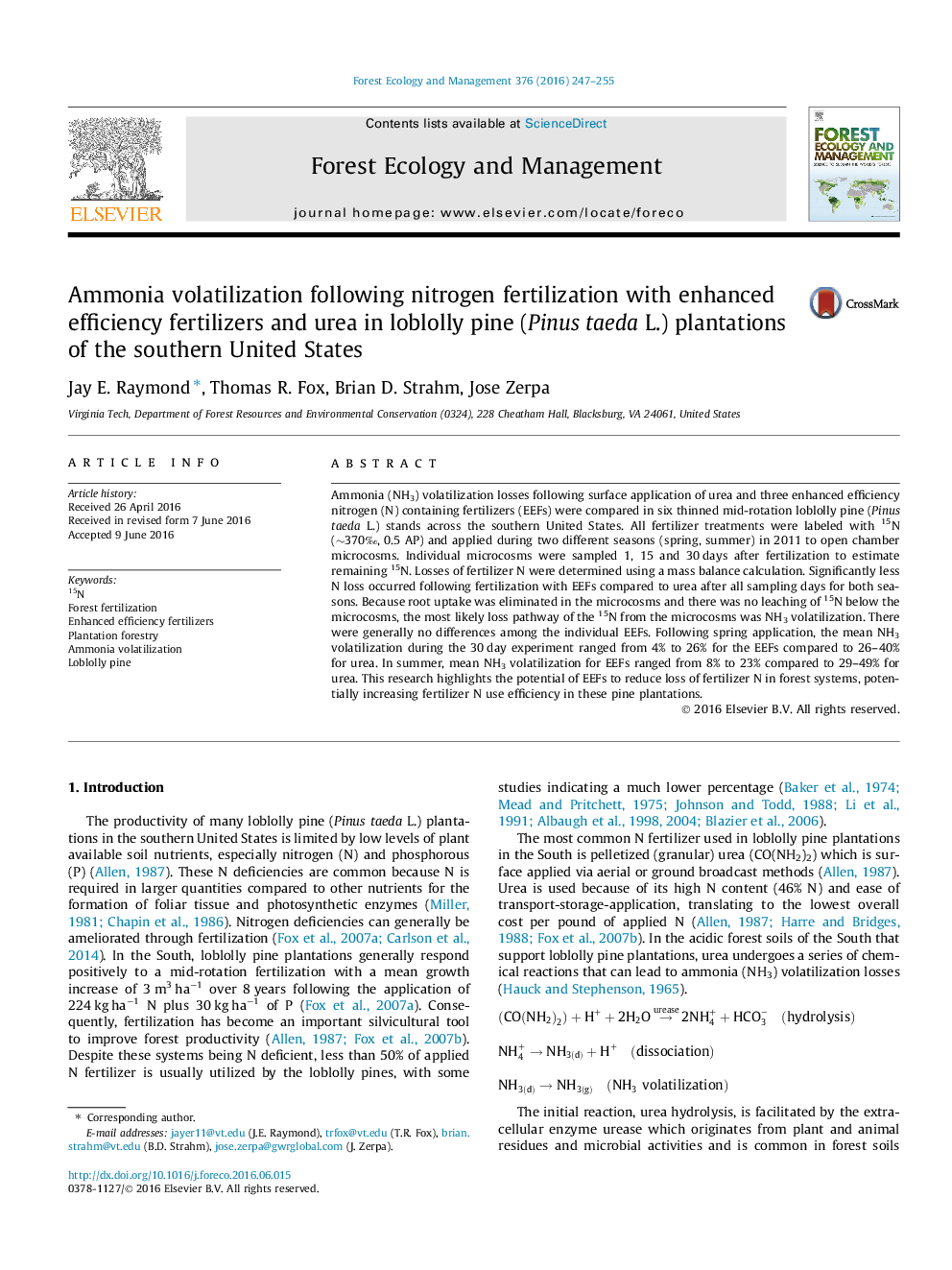| Article ID | Journal | Published Year | Pages | File Type |
|---|---|---|---|---|
| 6542134 | Forest Ecology and Management | 2016 | 9 Pages |
Abstract
Ammonia (NH3) volatilization losses following surface application of urea and three enhanced efficiency nitrogen (N) containing fertilizers (EEFs) were compared in six thinned mid-rotation loblolly pine (Pinus taeda L.) stands across the southern United States. All fertilizer treatments were labeled with 15N (â¼370â°, 0.5 AP) and applied during two different seasons (spring, summer) in 2011 to open chamber microcosms. Individual microcosms were sampled 1, 15 and 30Â days after fertilization to estimate remaining 15N. Losses of fertilizer N were determined using a mass balance calculation. Significantly less N loss occurred following fertilization with EEFs compared to urea after all sampling days for both seasons. Because root uptake was eliminated in the microcosms and there was no leaching of 15N below the microcosms, the most likely loss pathway of the 15N from the microcosms was NH3 volatilization. There were generally no differences among the individual EEFs. Following spring application, the mean NH3 volatilization during the 30Â day experiment ranged from 4% to 26% for the EEFs compared to 26-40% for urea. In summer, mean NH3 volatilization for EEFs ranged from 8% to 23% compared to 29-49% for urea. This research highlights the potential of EEFs to reduce loss of fertilizer N in forest systems, potentially increasing fertilizer N use efficiency in these pine plantations.
Related Topics
Life Sciences
Agricultural and Biological Sciences
Ecology, Evolution, Behavior and Systematics
Authors
Jay E. Raymond, Thomas R. Fox, Brian D. Strahm, Jose Zerpa,
